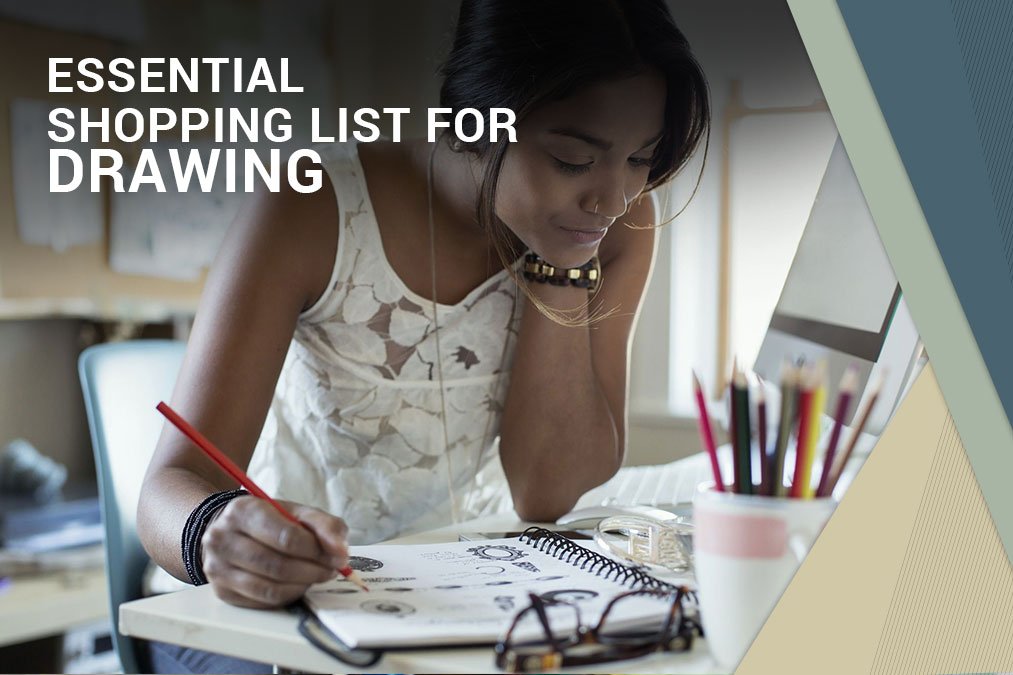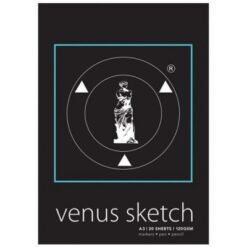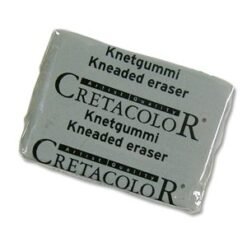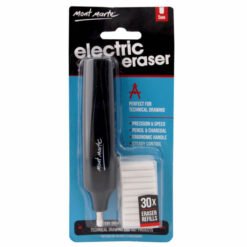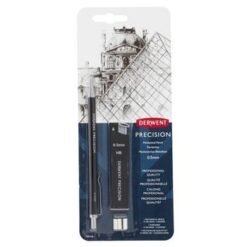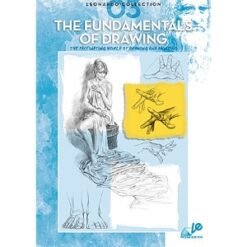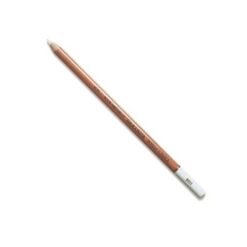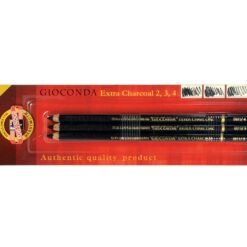Subtotal: R115.00
Art Shopping Lists
Drawing Essentials for Sketching
Most of us started drawing when we were very young. A standard pencil on some notebook paper would often “do the trick”. But as we grew and developed as artists, the materials and tools that we chose became more important. There are some drawing essentials for sketching which we’ll go through in this article. The connection between quality art materials and quality artwork becomes noticeable along the way and it’s no wonder that emerging artists desire to have the very best materials possible. If you are starting to get serious about your artwork, no matter what age, you may also be starting to get serious about the materials that you use.
Drawing Essentials for Sketching, the ultimate list:
1. Quality Drawing Pencils
We’ll start off with the most obvious essential – quality drawing pencils. When it comes to drawing pencils, each artist will find a brand that they connect with. There’s no way to know which brand will become your favourite until you try a few. Drawing Pencil Sets
Pencil sets usually come packaged in nice tins and can be great because they often include the full spectrum of graphite grades. Many sets include pencils with harder graphite (9H) through softer graphite (6B). Harder graphite makes lighter marks and keeps a sharp tip longer, while softer graphite makes a darker mark, but needs constant re-sharpening. These sets give the artist the ability to work with many different values and varieties of marks. Individual Pencils
Many artists will find that they don’t use all of the pencils in a drawing pencil set. Instead, they may find that they only use a few of the pencils. For example, 2H, HB, 2B, and 4B pencils would be plenty of range for most of us. If this is the case, then a pencil set would not make sense. Instead, purchasing the individual pencils as they are needed is a more logical approach.
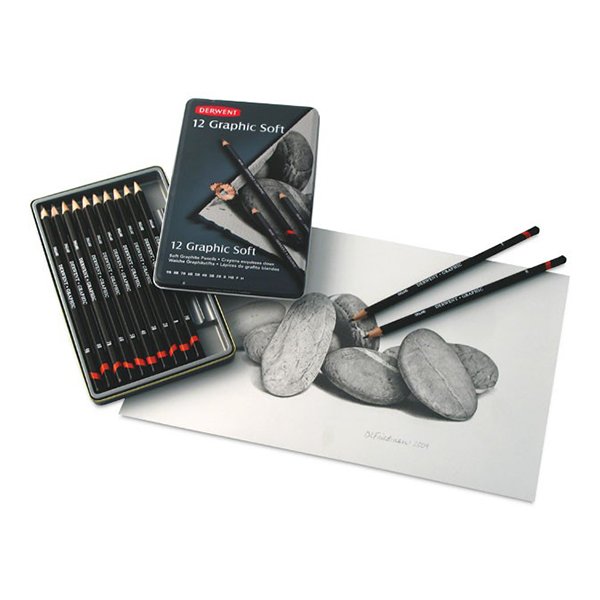
2. Sketchbooks
A sketchbook is one of the most important things an artist can have. I should point out that I am referring to an “active sketchbook” – one that receives attention on a daily basis. Anyone can “own” a book with blank pages of drawing paper. But the one that actively gets drawn in on a daily basis is the one of value. Let me make an analogy to a sketchbook’s importance. Let’s compare a professional athlete’s life to that of an artist’s. The professional athlete may work out for hours daily in the gym or on the track to enhance their performance on “game day”.
Though the world may never see the hours of hard work that have been put into the workout, the exercise is important – if not crucial to the athlete’s success. An active sketchbook is the artist’s “exercise”. It is the “hard work” that goes into the development of the artist and it is the breeding ground for innovative, artistic ideas. Though the sketchbook may never be seen by the world, it is often the driving factor in successful artworks and successful artists.
3. Quality Drawing Surface
A drawing can be made on any surface, but the quality of that surface is sometimes just as important as the medium that it is used to it.There are a few considerations for choosing a drawing surface that will affect the finished result.
- The “Tooth”– The “tooth” of the surface is the texture of the paper. The texture of the paper plays a role in how the drawing material is accepted on the surface. Heavier textures will produce lines that may appear “broken”, while smoother textures will produce smoother lines and gradations of value. Some artists will prefer heavier textures while others will prefer a smoother surface.
- Paper Weight– The weight of the paper refers to how much a ream (500 sheets) of that paper weighs. For most papers, the weight of the paper will be directly related to the thickness of the paper. For example, the 300gsm paper will typically be thicker than 80gsm.
- Acid-Free– Paper that is “acid-free”, without going into all of the technical details, will stand “the test of time”. This paper is will not yellow over time and is more resistant to fading that can occur when exposed to UV light.

4. Variety of Erasers
Erasers are for mistakes – right? Think again. Erasers can be a great mark-making tool as well. Each eraser creates a different mark and should be used as necessary according to the specific drawing medium. Here are a few recommended erasers.
Rubber Eraser – Your standard eraser for erasing graphite. This eraser uses friction to remove any material from the surface.
Kneaded Eraser – This eraser lifts material from the surface, instead of using friction to remove it. It can be pulled and fashioned into different forms to create specific marks. This eraser gets dirty over time but can be cleaned by pulling and “kneading” it.
Gum Eraser – “The Crumbler”. This eraser is great for removing media from surfaces that are sensitive to tearing. A gum eraser removes the medium through friction but crumbles as it does so – preserving the surface.
Vinyl or Plastic Erasers – This eraser is the toughest of the bunch. It can erase almost anything. But be warned – this eraser can tear the paper if you’re not careful.

5. A Good Pencil Sharpener
Pencils need to be sharpened with a quality pencil sharpener. Use a poor quality sharpener and you could be out of a pencil in a matter of moments.
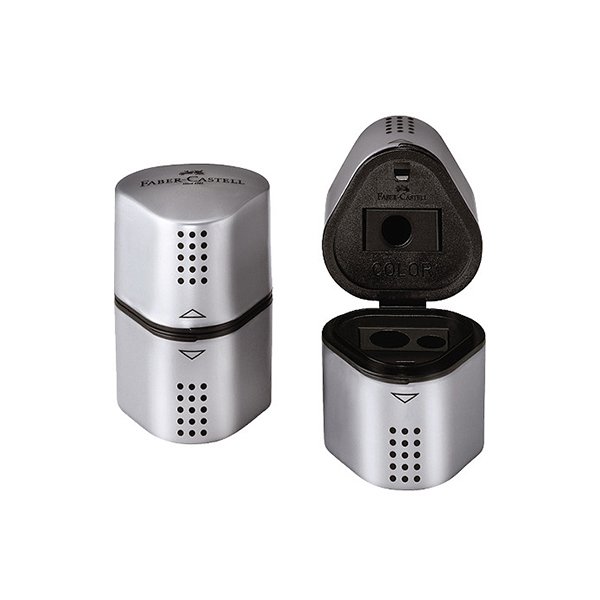
6. Charcoal or Conté
There are more options for black and white drawing than drawing with graphite. No artist’s toolkit would be complete without charcoal or conté. Charcoal provides a broader range of value and mark-making than what’s possible with graphite. The manner in which marks are made is different as well. Charcoal comes in both stick and pencil form. Sticks of charcoal are usually either “vine” or “compressed”.
Vine charcoal is softer and produces lighter marks, while compressed charcoal – which is concentrated, produces darker marks. Charcoal pencils can be sharpened like graphite pencils, making them great for details. Conté is similar to charcoal in the richness of colour – however, the makeup of the material is different. Charcoal is burnt organic material, while conté is made of clay constituents.
7. Blending Stumps / Tortillions
Blending stumps are essential for the artist wanting to smudge or move material around on the surface. A blending stump allows the artist to create gradations in value without introducing the oils of the finger (through finger smudging) which can make a drawing look dirty or uncontrolled.Blending stumps also allow the artist to create gradations and smooth applications of value in areas of detail that may be hard to get to otherwise.

8. Artwork Storage
Your artwork is important. Even those works that you’d rather not let anyone else see are important. They need to be treated with respect and stored in a manner that will keep them preserved and protected.There are more than a few options for storing artwork, but the most popular option is a portfolio.There are many different portfolio options out there on the market – each with their own benefits and drawbacks. If you are looking to add a portfolio to your collection, I would suggest looking for a couple features.

9. Art Material Storage
Taking care of your artwork is important – but taking care of your materials is important too. The Portable Container – There are plenty of portable solutions that are fortunately designed for artists. Many of these feature stackable trays and levels and are long and deep enough to accommodate brushes and other important tools.
Watch our FREE drawing course on YouTube by Lillian Gray here
Buy nearly any of these items from our online store:
-
 20pc eraser refills for Electric Eraser SinoArtR15.00
20pc eraser refills for Electric Eraser SinoArtR15.00 -
 Faber-Castell Graphite Sketch SetR115.00
Faber-Castell Graphite Sketch SetR115.00 -
 A2 Venus Sketch 20 sheets 120gsm for markers pens and pencilR130.00
A2 Venus Sketch 20 sheets 120gsm for markers pens and pencilR130.00 -
 Cretacolor Kneadable EraserR25.00
Cretacolor Kneadable EraserR25.00 -
 Electric Eraser with 30pc Erasers – Mont MarteR139.00
Electric Eraser with 30pc Erasers – Mont MarteR139.00 -
 Mechanical Pencil HB 0.5MM – DerwentR136.00
Mechanical Pencil HB 0.5MM – DerwentR136.00 -
 Drawing MangaR215.00
Drawing MangaR215.00 -
 Fundamentals Of Drawing 3 – Leonardo CollectionR245.00
Fundamentals Of Drawing 3 – Leonardo CollectionR245.00 -
 White Chalk Pencil Koh-i-NoorR45.00
White Chalk Pencil Koh-i-NoorR45.00 -
 Black Charcoal Pencil 3pcs – Koh-i-NoorR89.00
Black Charcoal Pencil 3pcs – Koh-i-NoorR89.00

 Faber-Castell Graphite Sketch Set
Faber-Castell Graphite Sketch Set 